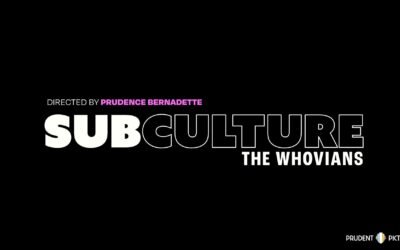(Graphic designer Sofia Tripodi who created W’SUP’s 2025 wall planner. Photo credit: Sofia Tripodi, 2025)
Wall planners are essential for students, helping them stay on top of everything from mid-semester breaks and assessments to census dates, STUVAC and final exams. Sofia Tripodi, a talented graphic designer and photographer known as @fromthetripod on Instagram, designed W’SUP’s 2025 wall planner.
Here, she shares her process of designing the planner in an interview.
What inspired your design for this year’s wall planner?
I drew heavy inspiration from the W’SUP team’s colour ideas, reference imagery and a range of retro styles to build a colour palette and distinctive character style for the illustration. The team desired bright, cohesive colours and liked using caricatures in the examples they found. I researched more into a vintage cartoon style to develop the simple, recognisable characters on the wall planner. With this, I chose a range of intense colours, starts and following shapes to build this fun, retro style around the characters.
Can you walk us through your design process, from the initial concept to the final product?
I received some reference imagery initially, and unpacking the project brief was my first step. When taking on a big design project such as this, it’s essential to digest the wants and needs of the design to satisfy the practical and visual needs. As such, I started outlining layout-wise and logistical elements I would need to include, everything from how many cells, the scale of images, the number of panels, etc., and making layout mock-ups. From there, I started my research and mock-up creations of characters that would aesthetically be an integral part of the design, along with a colour palette. The team and I refined the colours and illustrations through meetings and feedback in person and online until we completed 2 full draft versions. From there, we discussed useability and made structural changes to the layout. Giving students space to write and add to each day was the most important and enough space to read through resources. After those alterations, the additions of QR codes, dates and all other data, we had the beautiful wall planner we see today.
What were your biggest challenges, and how did you overcome them?
Printing bright colours and patterns is always challenging whenever you do something for print. Initially, we had this gorgeous gradient of colours that stemmed across the whole work, but as soon as we did a print test, it revealed a shocking difference. It’s genuinely so hard to print any gradients, especially on a massive scale, so I have to go in and change the whole colour palette and readjust each part of the design. Overall, it wasn’t too difficult but more of a learning curve and tedious act. Ultimately, I think we had a better colour and style anyway.
How did you balance aesthetics with functionality to make the planner user-friendly for WSU students?
As a graphic designer, I assemble an accessible, appropriate and well-designed piece for my projects. Thus, rather than approaching the concepts of functionality and aesthetics separately, I view them together with good-designed products. Designers play a crucial role in creating a visual solution with the products we create/projects designed for. In this case, the purpose of the wall planner was to be informative, accessible and eye-catching to students. Based on feedback from last year’s design, I focused on ensuring more room to write dates and increased accessibility by incorporating QR codes for resource links. So, I approached the design project focused on the layout to ensure legibility and the incorporation of both resources and cells larger spaced. Along with a big focus on scale to highlight what was essential and increase reader flow. I built the aesthetic aspect onto this layout plan and combined the functional and logical decisions to make an engaging and practical planner.
What makes this year’s wall planner unique compared to previous versions?
I think the QR codes are a significant distinction and game changer for the planner. Incorporating them makes accessing those resources much easier and less information to read. I also think having those cells larger and eliminating negative space was beneficial to students following feedback from last year’s planner. I hope everyone enjoys and makes the most of this year’s design.
What would it be if you could add or change one thing about the wall planner?
Perhaps the way we designed the months. I kept them simple and blended so as not to crowd space in the cell, but maybe slightly bigger or darker would have made them more noticeable.
Did you receive any feedback from anyone during the design process? How did that influence your decisions when designing it?
Yes, I received constant feedback from various people within the WSUP team. This feedback formed a key part of my design decisions, as I needed to fulfil the brief and create an accessible and eye-catching planner. Having other people’s eyes looking at the work is also always helpful. I spent months working on this project and relied on fresh eyes to see any inconsistencies, especially towards the end.
Do you have a favourite aspect of the design, and why?
I love the colours. They turned out amazing, and all the little details on each panel were really fun to make! They’re all slightly different but have the same elements, like the stars, squiggles, and some little goofy character. I love the clock; it was the first one I drew and is still my favourite.
This year, W’SUP’s wall planner blends creativity with practicality, giving students a visually engaging yet highly functional tool. Tripodi’s thoughtful design process, inspired by past editions and refined through feedback, created a fun and user-friendly planner for the year.
You can pick up the wall planner from most Western campuses with a W’SUP News stand, as well as student accommodation, Student Services Hubs and libraries.
You can download the digital planner here.



